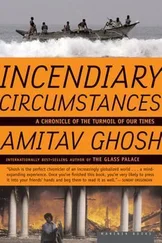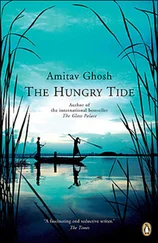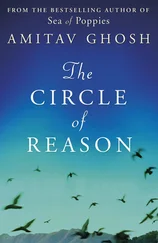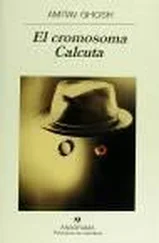‘I was almost asleep again when, through the chatter of the rain I heard a tiny, fragile sound, a distant tinkling. It was far away but approaching steadily, and as it drew nearer I recognised the unmistakable ringing of an elephant’s bell. Soon, in the subtle tensing of the hut’s bamboo beams, I could feel the animal’s heavy, hurrying tread.
‘“Do you hear that?” I whispered to the hsin-ouq. “What is it?”
‘ “It is the cow, Shwe Doke.”
‘An oo-si knows an elephant by its bell: it is by following that sound that he locates his mount every morning after its night-long foraging in the forest. To do his job well a hsin-ouq must know the sound of every animal in his herd; he must, if the need arises, be able to determine the position of all his elephants simply by concentrating on the ringing of their bells. My host was a hsin-ouq of great ability and experience. There was not, I knew, the slightest likelihood of his being mistaken in his identification of the approaching bell.
‘“Perhaps,” I ventured, “Shwe Doke was panicked by the storm; perhaps she managed to break loose of her fetters.”
‘“If she had broken loose,” the hsin-ouq said, “the chains would still be dragging on her feet.” He paused to listen. “But I hear no chains. No. She has been freed by a human hand.”
‘“But whose could that hand be?” I asked.
‘He silenced me abruptly, with a raised hand. The bell was very close now and the hut was shivering to the elephant’s tread.
‘I started to move towards the ladder but the hsin-ouq pulled me back. “No,” he said. “Stay here.”
The next moment the sky was split by lightning. In the momentary glare of that flat sheet of light, I saw Shwe Doke, directly ahead, moving towards the tai, with her head lowered and her trunk curled under her lip.
‘I jumped to my feet and began to shout in warning: “Thakin; McKay-thakin. .”
‘McKay-thakin had already heard the bells, felt the tremor of the elephant’s approaching weight. A flame flickered in one of the tai’s windows and the young man appeared on the veranda, naked, with a lantern in one hand and his hunting rifle in the other.
‘Ten feet from the tai Shwe Doke came to a standstill. She lowered her head as though she were examining the structure. She was an old elephant, trained in the ways of the aunging herd. Such animals are skilled in the arts of demolition. It takes them no more than a glance to size up a dam of snagged wood and pick a point of attack.
‘McKay-thakin fired just as Shwe Doke began her charge. She was so close now that he could not miss: he hit her exactly where he had aimed, in her most vulnerable spot, between ear and eye.
‘But the momentum of Shwe Doke’s charge carried her forward even as she was dying on her feet. She too hit the tai exactly where she had aimed, at the junction of the two cross-beams that held it together. The structure appeared to explode, with logs and beams and thatch flying into the air. McKay-thakin was catapulted to the ground, over Shwe Doke’s head.
‘Such is the footwork of the skilled aunging elephant that it can balance its weight on the lip of a waterfall, perch like a crane upon a small mid-stream boulder, turn in a space that would trip a mule. It was with those small, practised steps that Shwe Doke turned now, until she was facing the Assistant’s prone body. Then, very slowly, she allowed her dying weight to go crashing down on him, head first, her weight rolling over in a circular motion, in a technically perfect execution of the butting manoeuvre of the aunging elephant — an application of thrust so precise as to be able to cause a ten-thousand-ton tangle of teak to spring undone like a sailor’s knot. McKay-thakin’s lantern, which had been sputtering beside him, went out and we could see nothing more.
‘I threw myself down the hut’s ladder with the hsin-ouq close behind me. Running towards the tai I stumbled in the darkness and fell, face first on the mud. The hsin-ouq was helping me up when a bolt of lightning split the sky. Suddenly he let go of my hand and unloosed a hoarse, stammering shout.
‘ “What is it?” I cried. “What did you see?”
‘ “Look! Look down at the ground.”
‘Lightning flashed again and I saw, directly ahead of me, the huge scalloped mark of Shwe Doke’s feet. But beside it was a smaller impression, curiously shapeless, almost oblong.
‘ “What is it?” I said. “What made that mark?”
‘ “It is a footprint,” he said, “human, although crushed and mangled almost beyond recognition.”
‘I froze and stayed exactly where I was, praying for another bolt of lightning so that I would be able to ascertain for myself the truth of what he had said. I waited and waited but an age seemed to pass before the heavens lit up again. And in the meanwhile it had rained so hard that the marks on the ground had melted away.’

In 1905, the nineteenth year of the King’s exile, a new District Collector arrived in Ratnagiri. The Collector was the district’s administrative head, the official who was ultimately responsible for dealing with the Burmese Royal Family. The job was an important one and the officials who were appointed to this post were almost always members of the Indian Civil Service— the august cadre of officials who administered Britain’s Indian possessions. To join the Indian Civil Service candidates had to pass a difficult examination that was held in England. The overwhelming majority of those who qualified were British, but there were also among them a small number of Indians.
The Collector who arrived in 1905 was an Indian, a man by the name of Beni Prasad Dey. He was in his early forties, and an outsider to the Ratnagiri region: he was a Bengali from Calcutta, which lay diagonally across the map of India, at the other end of the country. Collector Dey was slim and aquiline, with a nose that ended in a sharp, beak-like point. He dressed in finely cut Savile Row suits and wore gold-rimmed eyeglasses. He arrived in Ratnagiri accompanied by his wife, Uma, who was some fifteen years his junior, a tall, vigorous-looking woman, with thick, curly hair.
King Thebaw was watching from his balcony when Ratnagiri’s officialdom gathered at the Mandvi jetty to receive the new Collector and his young wife. The first thing he noticed about them was that the new Madame Collector was dressed in an unusual garment. Puzzled, he handed his binoculars to the Queen. ‘What’s that she’s wearing?’
The Queen took a long look. ‘It’s just a sari,’ she said at last. ‘But she’s wearing it in the new style.’ She explained that an Indian official had made up a new way of wearing a sari, with odds and ends borrowed from European costume — a petticoat, a blouse. She’d heard that women all over India were adopting the new style. But of course everything came late to Ratnagiri — she herself had never had an opportunity to look into this new fashion at first hand.
The Queen had seen many Collectors come and go, Indian and English; she thought of them as her enemies and gaolers, upstarts to be held in scant regard. But in this instance she was intrigued. ‘I hope he’ll bring his wife when he comes to call. It’ll be interesting to see how this kind of sari is worn.’
Despite this propitious beginning the Royal Family’s first meeting with the new Collector came close to ending in disaster. Collector Dey and his wife had arrived at a time when politics was much on people’s minds. Every day there were reports of meetings, marches and petitions: people were being told to boycott British-made goods; women were making bonfires of Lancashire cloth. In the Far East there was the war between Russia and Japan and for the first time it looked as though an Asian country might prevail against a European power. The Indian papers were full of news of this war and what it would mean for colonized countries.
Читать дальше
Конец ознакомительного отрывка
Купить книгу













